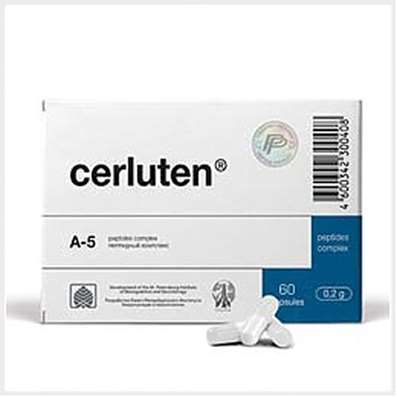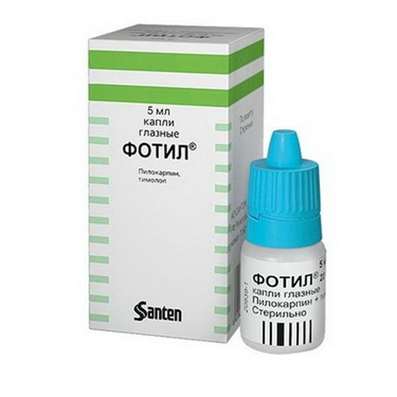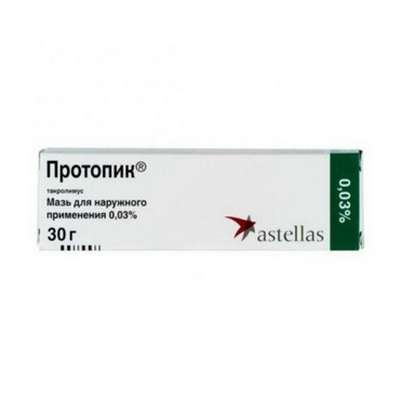Classification of Cardio-cytoprotectors by Localization of Pharmacological effect
10 Oct 2016
1. Inside-mitochondrial cytoprotectors:
1.1. Inhibition of fatty acid oxidation:
- Suppression of fatty acids betaokisleniya (Trimetazidine);
- The suppression of the transport of fatty acids into the mitochondria (Mildronate);
1.2. Direct stimulation of glucose oxidation (2etil6metil3oksipiridina succinate);
1.3. Stimulation of the cytochrome chain (coenzyme Q10).
2. The energy substrate transport in the mitochondria (phosphocreatine, glucose-insulin mixture, succinic acid).
3. Stimulation of anaerobic glycolysis (tiatriazolin) - little developed and inefficient.
4. antioxidants and mitochondrial cytoprotectors possessing antioxidant properties.
The most physiological inhibit the oxidation of fatty acids are pFOXingibitory (partial fatty acid oxidation inhibitors). One of the most widely used in the cardiological practice Trimetazidine metabolic drugs is based action which lies b-oxidation of free fatty acids into the mitochondria in blockade of free fatty acids in mitochondria in ischemia, resulting in the inhibition of ATP synthesis of free fatty acids. Therefore, the main energy source for the synthesis of ATP becomes glucose oxidation which to carbon dioxide and water is required for 30% less oxygen (calculated for one molecule of ATP) than for fatty acid oxidation, which ultimately leads to significant savings in oxygen for ATP synthesis inside the mitochondria [3, 36]. To date, a number of studies have shown a positive effect of trimetazidine on the pathological cascade of disorders developing in myocardial ischemia. Thus, the use of trimetazidine prevents depletion of energy sources (such as glycogen) in the cardiac muscle, reduces the content of sodium and calcium ions in cardiomyocytes. Trimetazidine reduces the passive permeability of the membranes and makes them more resistant to hypoxic and mechanical damage. Under the influence of the drug decreases the release of enzymes cardiomyocytes damage such as creatine phosphokinase and lactate dehydrogenase.
Another representative of this group is Mildronate that unlike Trimetazidine reduces the rate of biosynthesis of carnitine from its predecessor – gamma-butirobetaine. This leads to slower carnitine transport long chain fatty acids across the mitochondrial membrane, without affecting the metabolism of short chain fatty acids. In this case turned on an alternative system of energy production - the oxidation of glucose, which is a more efficient use of oxygen for ATP synthesis. Mildronate’s advantage is that when it is not receiving in mitochondria increased concentration of oxidized intermediate products of fatty acid metabolism, which in turn can be a source of toxic lipo-peroxides resulting activation of free radical processes in myocardial ischemia and reperfusion. Furthermore, accumulation gamma-butirobetaina stimulates the biosynthesis of nitric oxide, which normalizes endothelial function, reduction of platelet aggregation and eventually - a normalization of vascular tone. However, we can not exclude the other mechanism of formation during treatment with nitric oxide Mildronate - reducing the intensity of its inactivation by free radicals. A number of scientific studies have shown that Mildronate use in patients with stable angina reduced the frequency of angina attacks and the average daily consumption of short-nitrate, at the same time there was an increase in exercise tolerance. Therapeutic and protective effects Mildronate implemented due to its effects on the metabolic energy chain, which ensures the full functioning of the cells under ischemic conditions. The achievement of these effects is carried out by reducing fatty acid oxidation rate under ischemic conditions (energy saving), activation of glycolysis for energy production, pharmaceutical training (preconditioning), induction of biosynthesis of nitric oxide, decreased peripheral vascular resistance.
Thus, Mildronat due to the unique characteristics of its mechanism of action is the drug of choice among other cardio-metabolic for the treatment of patients with chronic forms of CAD, chronic heart failure of ischemic origin, as well as for correction of metabolic disturbances by target organs while hypertension . Positioning mechanism of Meldonium action at the clinic, there are several important points: first, use of the drug even when the initial CHD enables myocardial protection against ischemia and prevent worsening of cardiac disease, as metabolic disorders in the myocardium begins much earlier than the developed clinical picture of angina. Second, the addition of Mildronate to standard antianginal therapy leads to a significant reduction in the number of angina attacks, reduce the daily requirement of nitroglycerine, increase exercise tolerance, decrease in functional class and eventually - to improve the quality of life of patients. Third, in the acute myocardial ischemia Mildronate application leads to restriction necrosis by 30% in acute myocardial infarction - to reduce metabolic changes, and during reperfusion - the restoration of cardiac function, and reducing the incidence of ventricular fibrillation.
The efficacy and safety of the original product Mildronate with coronary artery disease and hypertension proven in numerous clinical studies that meet the requirements of evidence-based medicine. Thus, a comparative assessment of the effectiveness Mildronate in CHD patients with stable angina showed that the addition of Mildronate chronic CHD traditional therapy that included aspirin, statins, selective beta-adreno blockators and long-acting nitrates (patients received it for at least 4 months prior to enrollment and continued to receive in constant daily doses in the course of follow-up), it has allowed significantly reduce the frequency of angina attacks and reduce the need for short-acting nitrates [22, 25]. At the same time in separate papers clearly seen a decrease in the frequency of angina attacks and increase the need for sublingual nitrates in patients receiving Mildronate (estimated Mildronate dose of 500 mg / day and 1000 mg / day). In another open-controlled trial studied the effect of Mildronate on oxidative processes and endothelial function in elderly patients with coronary artery disease. While taking the basic drugs in combination with Mildronate (500 mg per day) for 12 weeks, showed a reduction in the initial level of lipid peroxidation products in average by 33% and increased resistance of LDL to oxidation by 26%. In addition, patients showed an increase in nitric oxide metabolites in the blood (an average 1.4 times) compared to before ingestion.
Of particular interest are the results of an international, multicenter, randomized, double-blind, placebo-controlled clinical trial MILSS II, in which it has been demonstrated that taking Mildronate in the treatment of stable angina in combination with standard therapy leads to a significant improvement of the patient and improve the quality of life of the patient. The aim of the study was to evaluate the efficacy and safety of Mildronate therapy at a dose of 1000 mg per day on a background of standard therapy in patients with stable angina. The results showed that in patients treated with Mildronate, duration of the functional load (FN) increased by 10%, whereas in the placebo group - only 2.4%. After 12 months of treatment, the difference in duration between the groups performing FN was 13% in favor of the group of patients taking Mildronate (p = 0.009). It should be noted that in the placebo group to 12mu duration FN month treatment was below 2.1% as compared with the treatment on the 6th month. Prior to treatment the average time of occurrence of ST segment depression of 1 mm or more in the group of patients treated with Mildronate, was 425.63 ± 160.97 seconds, while in the placebo group - with 398.98 ± 145.75 (differences between the groups were not statistically significant, p = 0,185). After 12 months of treatment, the figure in the active treatment group, increased to 483,83 ± 193,99 seconds, while in the placebo group - up to 425,98 ± 159,12 (p = 0,01). The results obtained allowed to conclude that 12 months Meldonium therapy increased the duration of the FN until ST-segment depression of 1 mm by 13.6% compared to baseline. The difference in rates between treatment groups at 12 m month of treatment was 13.9% in favor of the Mildronate. Thus, the results of the study MILSS II demonstrate that adding Mildronate to standard therapy of CHD increases the tolerance of patients to the FN, increases the level of the maximum reached FN, duration of the FN to the occurrence of angina and ST segment depression, and improves the quality of life of patients.
A special place in the study of the effectiveness cardio-protectors with CHD is given to their use in coronary angioplasty. Percutaneous coronary intervention (PCI) and coronary artery bypass grafting (CABG) is associated with the development of complications of the cardiovascular system, which include myocardial dysfunction with the development of "stunned myocardium" in violation of local contractility of the left ventricle, hemodynamic instability and the emergence of a variety of arrhythmias [34 ]. According to modern concepts, ischemic and reperfusion myocardial changes, including during coronary revascularization, developed as a result of violations of cardiomyocyte metabolism [42]. The effectiveness of Mildronate for correction of the above pathological changes were confirmed by the results of a clinical study carried out on the basis of GOU VPO "Russian State Medical University", which involved 149 patients with stable angina II-III FC at the age of 41 to 75 years old. All patients underwent coronary artery bypass grafting with cardiopulmonary bypass or percutaneous coronary intervention. Patients of the first group for 10-15 days prior to revascularization to drug therapy (nitrates, beta-adreno-blockators, aggregation inhibitors, ACE inhibitors, antiarrhythmics) was added Mildronate for three days, then - twice a week. The second group (control) received no metabolic drugs. On the day after CABG 2-3y against application Mildronate was found to decrease by 15% of the index breach of local segmental left ventricular contractility (INLS), while only 3.5% decreased in comparison value INLS group. Prior to performing balloon angioplasty as a result of the use of preoperative Mildronate INLS decreased by 14% in the control group - 2.5%. After performing balloon angioplasty in the main group INLS decreased by 19.5% from baseline, while in the comparison group - 12%. Inclusion in the preoperative preparation Mildronate allowed immediately after angioplasty, increased left ventricular ejection fraction of 12%, while significant changes in left ventricular ejection fraction in the control group was not registered. This study confirmed the ability to reduce the degree of Mildronate hibernating myocardium in patients with chronic ischemia. Mildronate use in coronary angioplasty as part of the preoperative and postoperative therapy accelerates the recovery of the contractile function of the myocardium on the background of improving coronary blood flow and thus increased the effectiveness of revascularization.
As regards the application of cardio-protectors in hypertension, it should be noted that in recent years published a series of works in which are presented the positive results of this group of drugs. Interest in this kind of research is caused by lesions of poly organ damage target organs with hypertension, the leading role in the pathogenesis of which play a violation of intracellular energy metabolism and activation of free radical processes. In a clinical study on the comparative assessment of cardio-protectors efficacy in patients with hypertension, the patients of the first group was administered Mildronate in addition to antihypertensive drugs Enalapril, patients second - trimetazidine was added, and in the third (control) to the end of the study conducted Enalapril monotherapy. After 6 months of taking the drugs in all patients there was a decrease of lipid peroxides in the blood, and decreased more significantly (by 31%) in the group Mildronate level of diene conjugates than in the comparison group (20%). Against this background, there was an increase degree of endothelium vozodilatatsii during cuff test, but the persons who Mildronats, the level of endothelium-dependent vasodilation was significantly higher. In addition to the above effects of the use of enalapril on the background Mildronate strengthened angio-protection (thickness intimamedia complex of Mildronate group decreased by 16.2% and the Group Trimetazidine and Enalapril - by 9.7 and 9.5%, respectively). Finally, in patients with hypertension with enalapril combination Mildronate enhances the hypotensive effect of the latter accelerated the achievement of target blood pressure, contributed to the normalization of diurnal blood pressure profile in more cases than monotherapy with ACE inhibitor.
Thus, the use of Mildronate in the complex therapy with basic antihypertensive agents allows to use it as a means of secondary prevention of hypertension, progression of target organs and development of associated diseases.
So, summing up the above, we can conclude that modern cardiocytoprotectors received a new evidentiary basis in the direction of the treatment of cardiovascular diseases. Due to the short time of the study there is no serious evidence base of their influence on survival and mortality in patients with cardiovascular disease. However, to date, received clinical data on improving the efficiency of treatment of patients with coronary heart disease and hypertension indicate the prospects of their use in combination therapy in patients with cardiovascular disease.

 Cart
Cart





